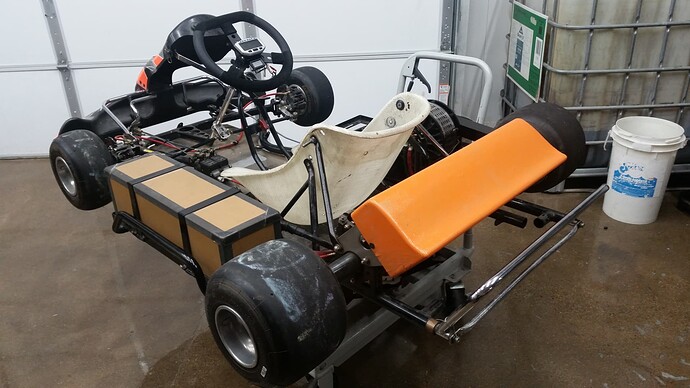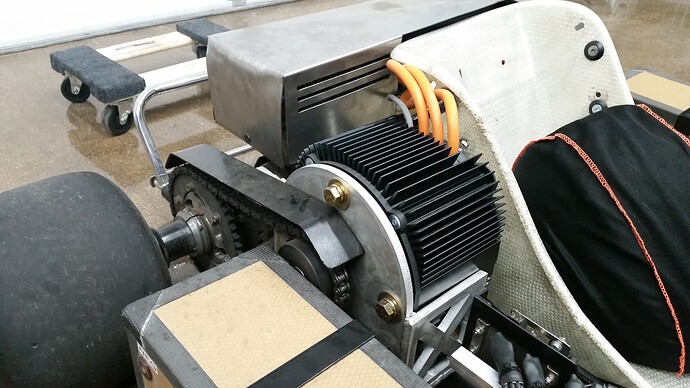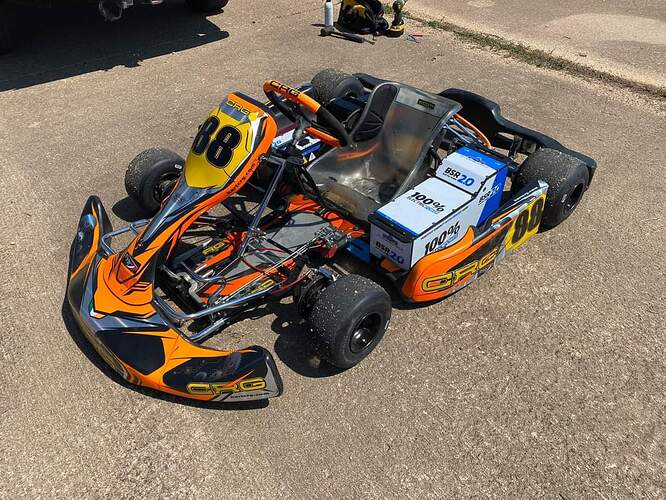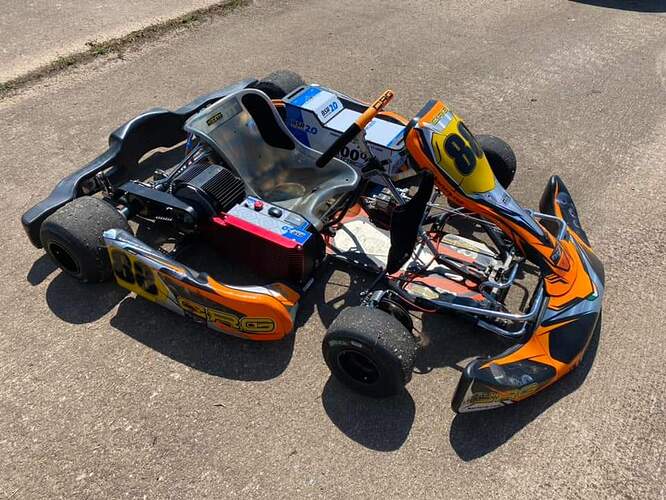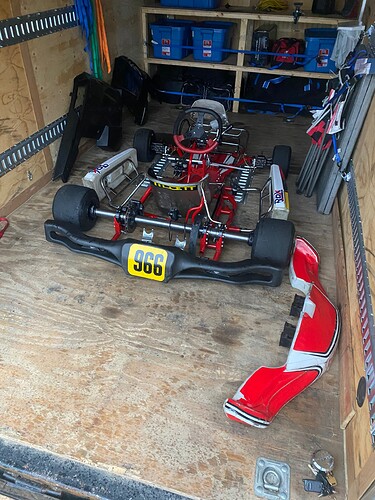Does anyone have any questions about my experience in ownership regarding the BSR Blue Shock Race 2.0 powertrain? I’m trying to get everyone comfortable so I have more company to race with😁
A little background:
In early 2017 I wanted a toy😅 I had decided I wanted some kind of kart, but always disliked the idea of neighbors calling the cops so a 125cc shifter was out. I decided I wanted something electric. After seeing Rattlesnake Electric Sports karts in California, and already having electric everything (Hustler Zeon, Razor pocket rocket, ryobi, Worx), this was going to happen.
I purchased a CRG chassis on Craigslist missing nearly everything, and in my search for used parts, found what I was actually looking for… a 2008 CRG Road Rebel roller that had been converted to electric with an Agni 95R, Alltrax 7245 controller and no batteries. I sourced a harness, some 5s5ah Turnigy lipos and I was flying.
The local SCCA/solo/autoX group said I could bring it out; I took FTD at my first event with a setup that topped out at 54mph to end their season. Everyone was shocked, except me😅 That winter, jacking around, I got that Agni 95R to start throwing black stuff out of the vents and smelling funny so it gave me an excuse to upgrade😅.
Its January 2018; Motenergy1507, Sevcon Gen4Size6 and (60)Turnigy 5s5ah lipos (Don’t bother roasting my battery setup. I’m much smarter now and have roasted myself more than you could everrrrrr).
I took FTD at every event (expept 1, but don’t get me started lol) I purchased the motor, controller, and everything except the batteries as a kit through an online vendor, EMF power. The kart was fast, but never fully sorted. The software was not written directly for the kart, so it had random faults about 30% of the time. A change in driving style got this down to <10%, but not desired. To top things off, after a season of road racing Legends, the National SCCA contacted me to say “don’t bring that kart to another event.” Ouch.
The entire time I had been petitioning to the SCCA for electric kart allowance. I had found Solo courses were the best 1 lap time attack, and all the tight corners suited the electric that much better. REGARDLESS OF YOUR POSITION ON ELECTRIC PROPULSION, ITS HERE TO STAY. There will still be a place for petrol/diesel, but electric as well. So, I kept pushing.
While Covid put everything on hold, I kept sticking my nose in with the SCCA, and with the help of my local Wichita SCCA region, we had the SCCA National Office’s attention. After many months of safety discussions and emails, in April of 2022 I was given the approval start running a “production electric powertrain”. The word “production” is important here, because that’s the real safety concern: homemade batteries. This is a current pilot project, as this is still THE only electric kart allowed until the SCCA Solo Safety Board is comfortable moving forward with proposed safety regulations.
I purchased a 2020 CRG KT4 roller from Ron White (super nice guy btw) in a sale facilitated by Rich Hilleman (Rattlesnake Electric Sports, another super nice guy) and had it ready to go when my BSR2.0 powertrain arrived. Rich was petitioning to the SCCA 10 years ago about these and I just picked up the baton.
It’s a super easy job to mount everything. I had to make some modifications to my left side plastics, as well as moving the seat position left, but nothing outside of very basic mechanical skills. I did fabricate and paint my chain guard as well.
When I realized we have sprint tracks within 3.5 hours of my house, and I now have a fully sorted kart that will run ~18 minutes, I wanted the wheel to wheel action like I loved about Legneds racing again. As was similar with the SCCA, the insurance thing is keeping tracks from allowing me on course with petrol karts at the same time. These can run with gas karts, but if there are enough electrics, they race by themselves. I can now say these are faster than KA100 on road course (but I can’t go 30 minutes). I’m about sure the current BSR2.2 25KW+ is fastest of anything on a small sprint course, but ~12 minute run time.
I have a BSR2.0 25KW, but can upgrade software to BSR2.2 and/or 25KW+ with a software upgrade via shipped laptop service. Knowing what I know about the Gen4Size6, in the future you can have a toggle switch between 25kw(race) and 25kw+(quali) modes. I’ve asked, BSR currently does not offer.
TLDR I’m transparently trying to convince you to race electric😃 Even if it’s not racing with me or in my area, just moving the acceptance in that direction helps in one way or another.
